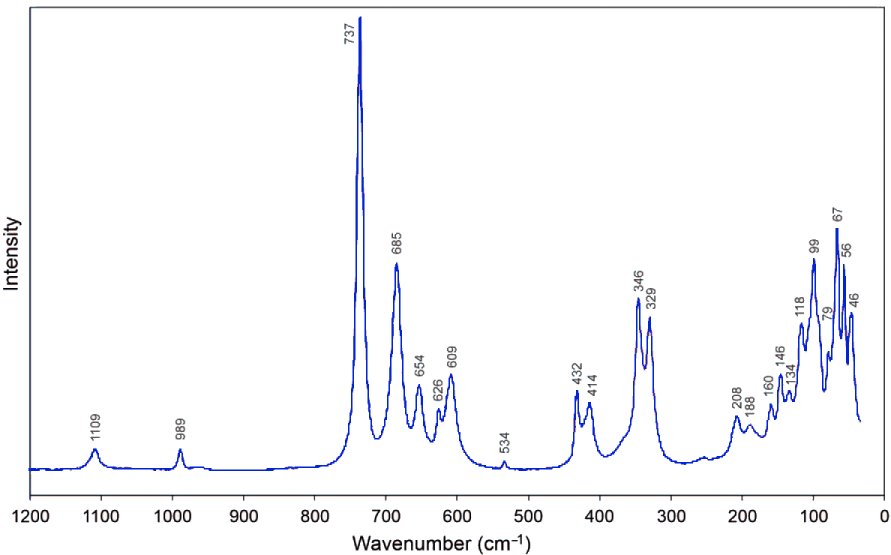
Northstarite Raman Spectrum
Anthony R.
Kampf1, Robert M.
Housley2, George R.
Rossman2
1Mineral Sciences Department, Natural History
Museum of Los Angeles County, Los Angeles, CA 90007, U.S.A.
2Division
of Geological and Planetary Sciences, California Institute of
Technology,
Northstarite, Pb6(Te4+O3)5(S2O3), is a new mineral from the North Star mine, Tintic district, Juab County, Utah, USA. It is an oxidation-zone mineral occuring in a vug in massive quartz-baryte-enargite-pyrite in association with anglesite, azurite, chrysocolla, fluorapatite, plumbogummite, tellurite, zincospiroffite, and the new mineral adanite. Crystals are beige short prisms with pyramidal terminations, up to about 1 mm in length. The mineral is transparent to translucent with adamantine luster, white streak, Mohs hardness 2, brittle tenacity, irregular fracture, and no cleavage. The calculated density is 6.888 g/cm3. Northstarite is uniaxial (–) and nonpleochroic. The Raman spectrum is consistent with the presence of tellurite and thiosulfate groups and the absence of OH and H2O. Electron-microprobe analyses gave the empirical formula Pb5.80Sb3+0.05Te4+5.04S6+1.02S2–1.02O18. The mineral is hexagonal, space group P63, with a = 10.2495(5), c = 11.6677(8) Å, V =1061.50(13) Å3, and Z = 2. The five strongest X-ray powder diffraction lines are [dobs Å(I)(hkl)]: 3.098(100)(113), 2.957(88)(300), 2.140(42)(223), 1.7335(41)(413), and 1.6256(31)(306). The structure (R1 = 0.033 for 1476 I>2σI reflections) is a framework constructed of short (strong) Pb–O and Te–O bonds with channels along the 63 axes. The thiosulfate groups at the centers of the channels are only weakly bonded to the framework.
